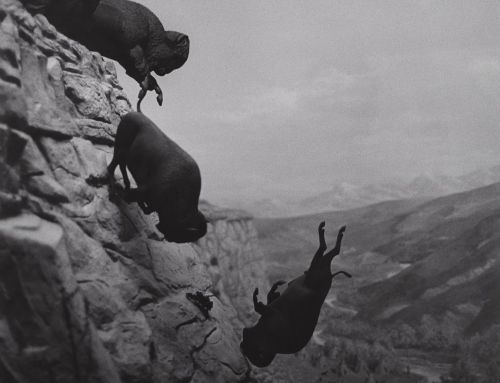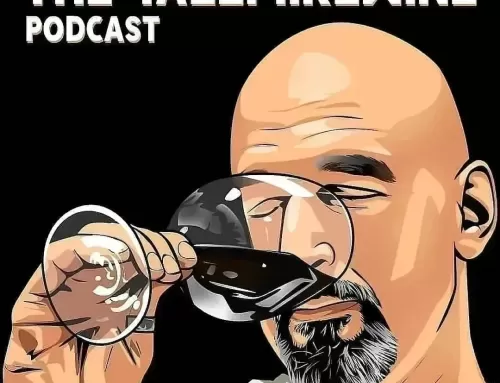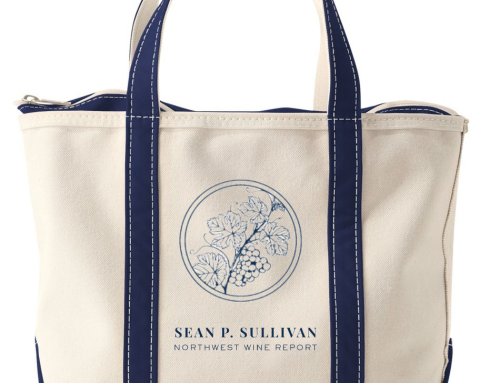Washington has seen a meteoric rise in the number of wineries in the state since the start of the new millenia. There were approximately one hundred and fifty wineries in Washington in the year 2000. By the end of 2009, there were more than four times that number. Washington now boasts more than six hundred and fifty wineries with a new one added almost every ten days. Of the many wine regions across the state, perhaps no area has been as integral to this increase – or has been producing such exciting results – as the Walla Walla Valley.
Walla Walla Valley’s recent wine history dates to the late 1970s when Gary Figgins established Leonetti Cellar. More than thirty years later, the valley has over eighty-five brick and mortar wineries and approximately one hundred and twenty wineries total – close to one fifth of the total number of licensed wineries in the state.
Originally most of the wineries in the Walla Walla Valley sourced grapes from vineyards throughout the state. However, plantings in the area have increased dramatically in the last ten years. The results have been equally dramatic, with grapes from Walla Walla Valley vineyards producing some of the state’s finest wines. Vineyards are now planted throughout the Walla Walla Valley American Viticultural Area (AVA), an area that stretches from the southeast section of the state across the border into Oregon. And therein lies the problem.
Some of Walla Walla Valley’s finest wines are not from vineyards in Washington. Rather, they are from vineyards are in Oregon. Prominent vineyards on the Oregon side of the Walla Walla Valley AVA include Cayuse Vineyards and Seven Hills Vineyard to name just two.
Surprisingly, despite the fact that part of the AVA lies in Oregon, Washington has been able to lay claim to the Walla Walla Valley designation all by itself with little fuss from our neighbors to the south. Many wineries in Oregon use fruit from Walla Walla Valley and designate their labels as such. Ironically, regardless of where the vineyards or wineries are, a Walla Walla Valley designation seems to continue to build Washington’s brand in general and the AVA’s brand in particular.
So what’s the problem? Who cares whether the vineyards and wineries are in Oregon or in Washington if the wines are good, especially when everyone thinks they are from Washington anyway?
The problem comes when different areas in the Walla Walla Valley become increasingly distinctive and people decide to seek sub-AVA status. For example, in the past several years, no area in the Walla Walla Valley, or even in Washington in general, has generated as much excitement as ‘The Rocks’ area of the Walla Walla Valley. This area was established by vigneron Christophe Baron of Cayuse Vineyards in the late 1990s. ‘The Rocks’ area is located on a historic, cobblestone-strewn riverbed. A number of wineries, such as Buty and Reynvaan Family Vineyards, have recently established vineyards in this area. The wines coming from The Rocks regions thus far have been as distinctive and terroir-driven as any coming out of Washington. Given this, the area seems sure to merit its own AVA designation in the future.
The problem is that The Rocks region of the Walla Walla Valley AVA lies wholly in Oregon. Every single inch of it. How can Washington retain its hold on the Walla Walla Valley brand if The Rocks region gets sub-AVA status and all of the grapes are coming from Oregon? Worse, what if Washington’s most distinctive and recognized wines come from vineyards in – gasp – Oregon?
There are many possible ways to address this problem. One would be to stretch any sub-AVA boundaries to include a tiny portion of Washington, although in the case of The Rocks area, this would be a considerable stretch. Another is to simply prevent sub-AVA status from happening, although that is not in anyone’s best interest. Increasing specifity and identity, to the extent that it speaks to something genuine, is in the long run, critical to the region’s success. What about labeling every bottle ‘The Rocks, Walla Walla Valley?’ Isn’t it enough if people still think the wines are coming from Washington even if they are really coming from Oregon? Nay, while many wine lovers might not know the difference, in our hearts, we would know.
My personal solution is for Washington to annex the Oregon section of the Walla Walla Valley AVA and rightfully claim it as our own. While Fort Walla Walla has not been used in quite some time, perhaps soldiers could billet at the historic facility during the brief scuffle for old times’ sake. In my experience, Oregonians are a friendly lot, so I anticipate no more than a two or three day battle.
However this problem is eventually solved, know this. Washington retaining the ‘brand identity’ of Oregon areas of the Walla Walla Valley such as The Rocks region will be critical to the state continuing to build its reputation as a world-class wine region. Hopefully we can accomplish it without any bloodshed.







Try entering a wine from the The Rocks (aka the Ber-Walla Triangle) into CellarTracker, hard to keep it accurate for the anal-retentive wine geeks out there.
I think if we launch a pre-emptive strike deep into the heart of Milton-Freewater, Oregon (little town south of Walla Walla, guess they couldn't decide if Milton or Freewater should get credit), we could then lay claim to the Oregon Walla Walla AVA by Manifest Winery. We could easily confuse the citizens by asking for DNA samples from each of them. Of course, there would only be two or three strains among the several hundred yokels there. Don't fire until you see the whites of their Pinot Gris!
Anon1, very good point about the CellarTracker issue. Will definitely drive some people bonkers.
Anon2, look for an internet sign-up form in the coming days for my 'Take Back the Rocks' militia.
Stop stop stop. Hold on. K Vintners 'Royal City' syrah is from where? Quilceda Creek's cabernet is from where (Red Mountain and HHH)? Adams Bench Red Willow cabernet is from where (Yakima Valley)? Mike Januik's Klipsun Vineyard merlot is, duh!, Red Mountain.
Fine, let's talk about the homeboyz in Walla Walla. Buty's Conner Lee Vineyard chardonnay is from where (Columbia Valley)? Woodward Canyon's 'Old Vines' cabernet component is from where (Champoux-HHH)?
Washington…Orygun…Walla Walla…Red Heaven Gorge…who cares?! It's NOT from California. It's Northwest all the way. Stand unified and we will overthrow the Californikators in time. And, isn't that all that matters anyway? ~WAwineman
WWM, fear not. I'm not saying 'Washington's best wines' but rather 'some of Washington's best wines.' There are exceptional wines being produced from grapes from all over the state.
Here is why I think the southern portion of the Walla Walla Valley AVA is important. Washington is increasingly being recognized as a producer of top quality Syrah. Personally, I believe that this grape will play an important part in the state's wine future. One of the areas that it grows most distinctively is The Rocks.
BTW, I like your thinking – if I may extend it a bit – regarding Oregon and Washington forming Pacific Northwest allies against the California and Texas axis.
Darn it Sean, you sure know how to disarm a maggot with your charm.
I did a 'flyover' of the Seven Hills plat when I recently reviewed the Seven Hills Estate merlot and that area is as trendy as Red Mountain's. And, that's probably due to smart decision-making by North Slope Management/SeVein. Take a look at the map of the wineries there: http://www.seveinvineyards.com/sevein/map.php
I don't think even our southern neighbors could screw up the place by planting pinot noir there. Oregon's only in name. ~WAwineman
Nice post and analysis. A great example of how geography and terrior don't care about political boundaries such as states. It's unfortunate in some ways consumer's feelings about wine have become tied to state (mostly California's fault), versus region such as in Europe. AVA's much of that dilemma until our pride gets in the way :)
WWM, Indeed, SeVein has a lot of interesting stuff going on and seems primed to become a top site. Lots of people getting in there. Thanks for the comment.
Josh, thanks for the comment. Interesting point regarding sentiments in the Old World versus New. Pride? No, we just want what is rightfully ours! Oregon, prepare to be boarded!
One way to recognize distinction in an appellation, while not creating a gazillon mini-appellations that no one knows where they are, is to use the District moniker. Think Stags Leap District in the Napa Valley. The wines carry both designations on the label – that way the integrity and recognition of the appellation is there as well as the identifier of the specific area of the appellation where the fruit is produced. Since WW is well-known, this seems like the ideal solution.
Anon, a very good idea. I would love to see this happen. Thanks for the comment.